HOLY FLUX!
Rituals for de/consecrationExhibition, Serendipity Arts Festival, 2023

The status of a place, object, or entity can be reversed after it is no longer being used as ordained. There is a process for this: deconsecration. Often performed in response to what is perceived to be cracks and fissures in a place’s, object’s, or entity’s historical significance, deconsecration involves the removal of sacred designations through a series of rituals or actions. It is ultimately a process through which an authority exercises its right to cement that which is sacred and unravel that which is not. These processes of unravelling, re-cementing, de-assigning, re-assigning, dissolving and re-formulating; when witnessed; beg the question: Who has the power to do so?
HOLY FLUX! featured 13 artists in their attempts to de-consecrate or re-consecrate from the margins. Do their attempts truly dissolve and re-form what is deemed sacred, or simply unveil its fragile foundation? Struggling upwards and outwards, the works in this exhibition give shape to a state of flux; frozen if only for a moment; sometimes with reverence, and in other times without.
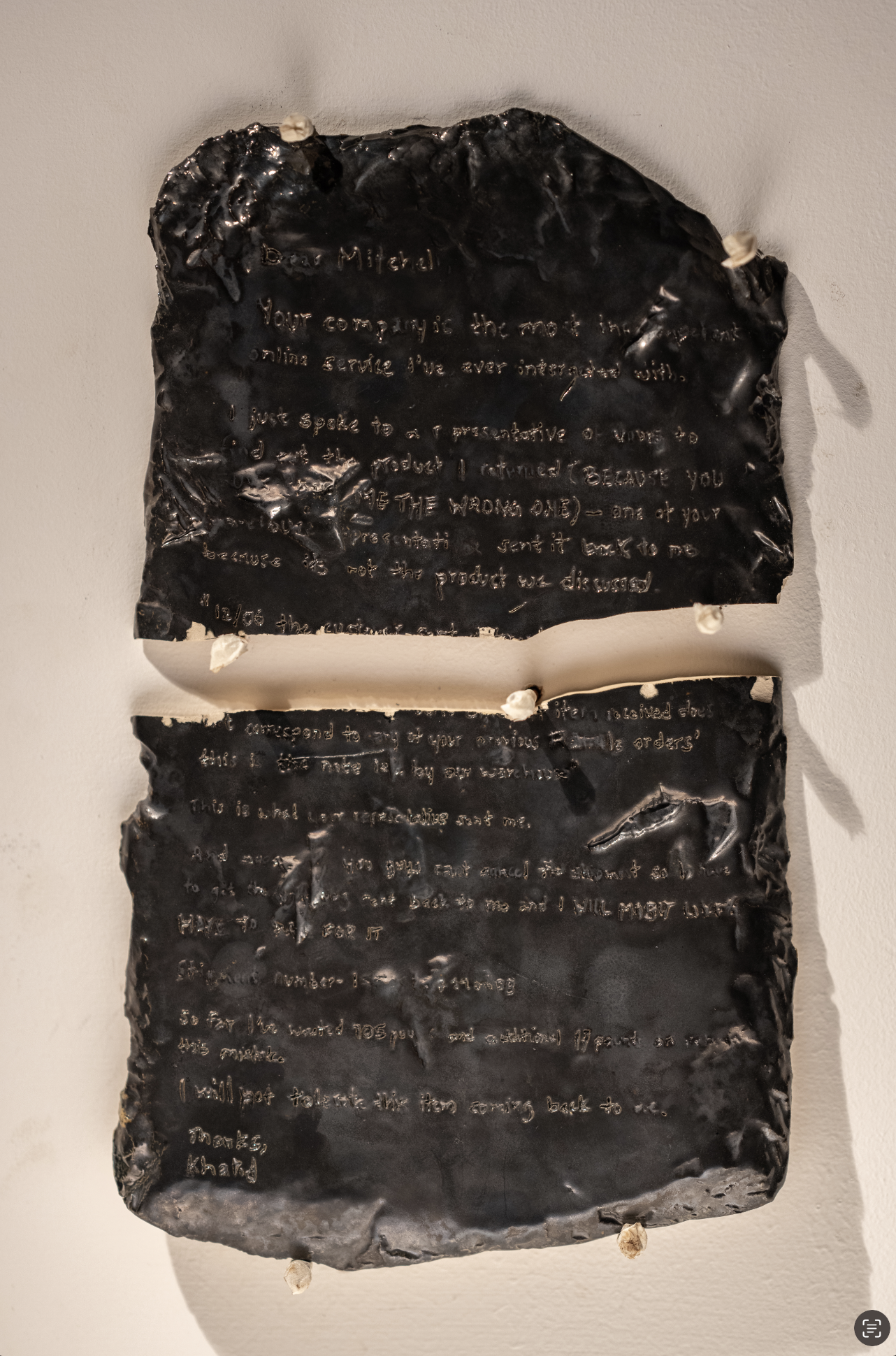


Khalid Jauffer @anotherkhalid
Sculpture and Installation
Clay Tablet, Invoices, Receipts and Condition Reports
“Return the Slab” presents a cracked monolithic tablet, its surface intricately etched with a complaint. Alongside this tablet are various commercial invoices, DHL receipts, and condition reports, each documenting the distance and hassle involved in the journey of the tablet. This piece emerged from Khalid Jauffer’s own experience with a purchase gone wrong. It began when the artist received the wrong bag from an online purchase, and in returning it, was told that he had returned the wrong bag. In a physical manifestation of this struggle, he says “I took my frustration on to this slab, etching my email complaint to the company to produce a monolithic piece declaring my hate to this purchase.” Later, the slab which had almost broken while being fired in a kiln, snapped in half on a flight to Jeddah.
Troubled by this “sad story that keeps getting worse” Jauffer resigned himself to tracking inconveniences related to the slab via invoices, DHL receipts and condition reports. Through “Return the Slab” Jauffer contemplates the sanctity that is ascribed to fleeting material possessions and the rituals of care ascribed to consumer goods, highlighting the fragile foundations of what society often holds sacred.
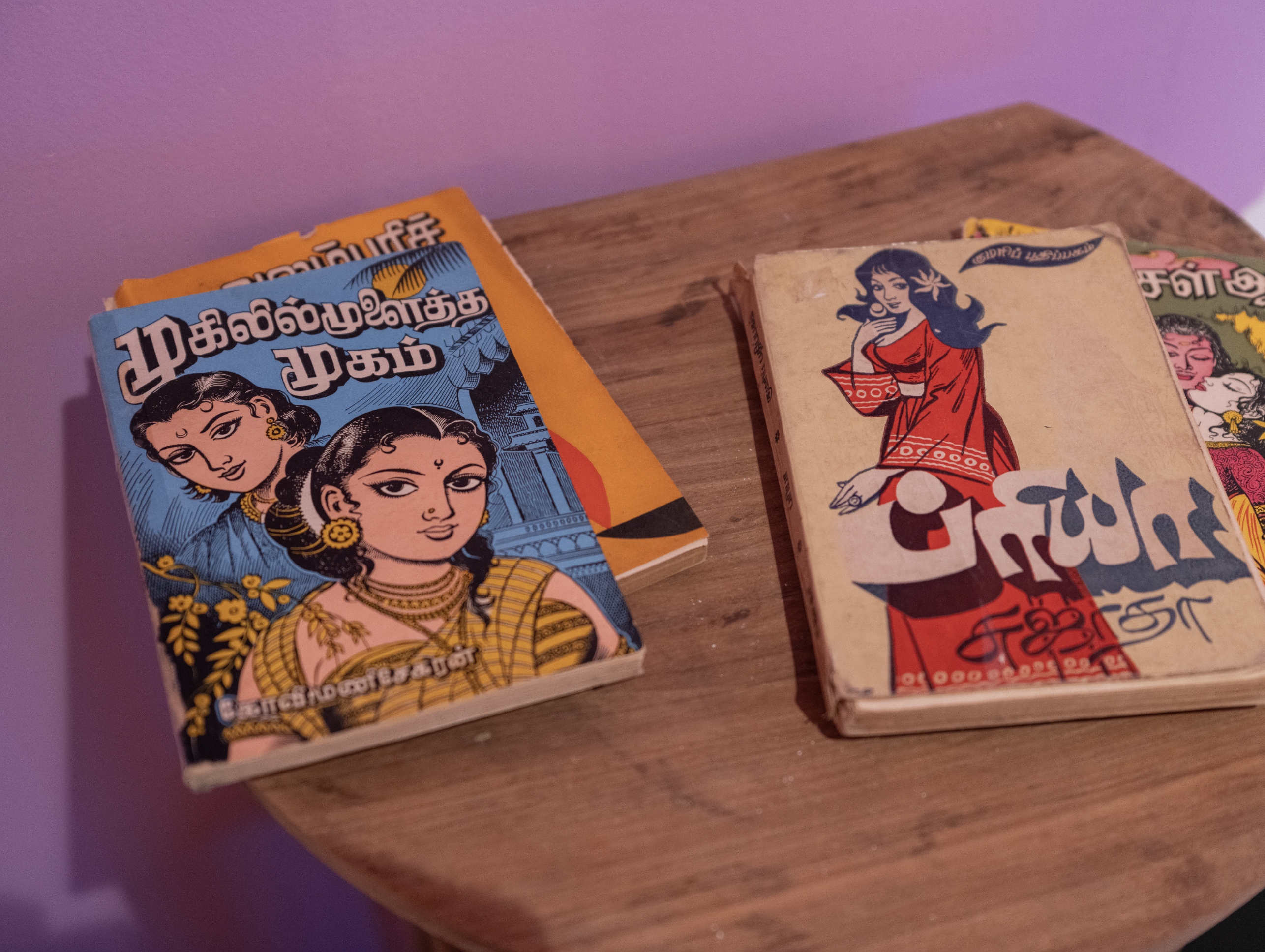



Mustafa Mustafa (2023)
Sharika Navamani and Imaad Majeed
(Edition commissioned for Serendipity Arts Festival 2023)
Installation and Video
CRT TV, TV Stand, Bed, Bookshelf, Lampshades, Posters, Scripts
‘Mustafa Mustafa’ features a re-edit and reinterpretation of the influential 1996 Tamil film ‘Kadhal Desam’. Playing on a tv in a teenager’s bedroom, this installation by Sharika Navamani and Imaad Majeed also features a series of posters and a ‘ghost script’.
The artist’s imagine a history in which ‘Kadhal Desam’ was initially conceived of as a queer love story between the two male protagonists. By re-editing scenes and music videos from the film, together with fictitious promotional posters that may have accompanied it; all within the space of a teenager’s bedroom; ‘Mustafa Mustafa’ attempts to speculate on the influence such a film may have had on the world. The inclusion of a meticulously annotated ‘ghost script’ imagines this queer love story to have been altered to conform to venerated heteronormative societal norms.
Through this work Navamani and Majeed raise questions about the sanctity of heterosexuality in Tamil visual culture and representation that is shaped by capitalist and culturally conservative forces.

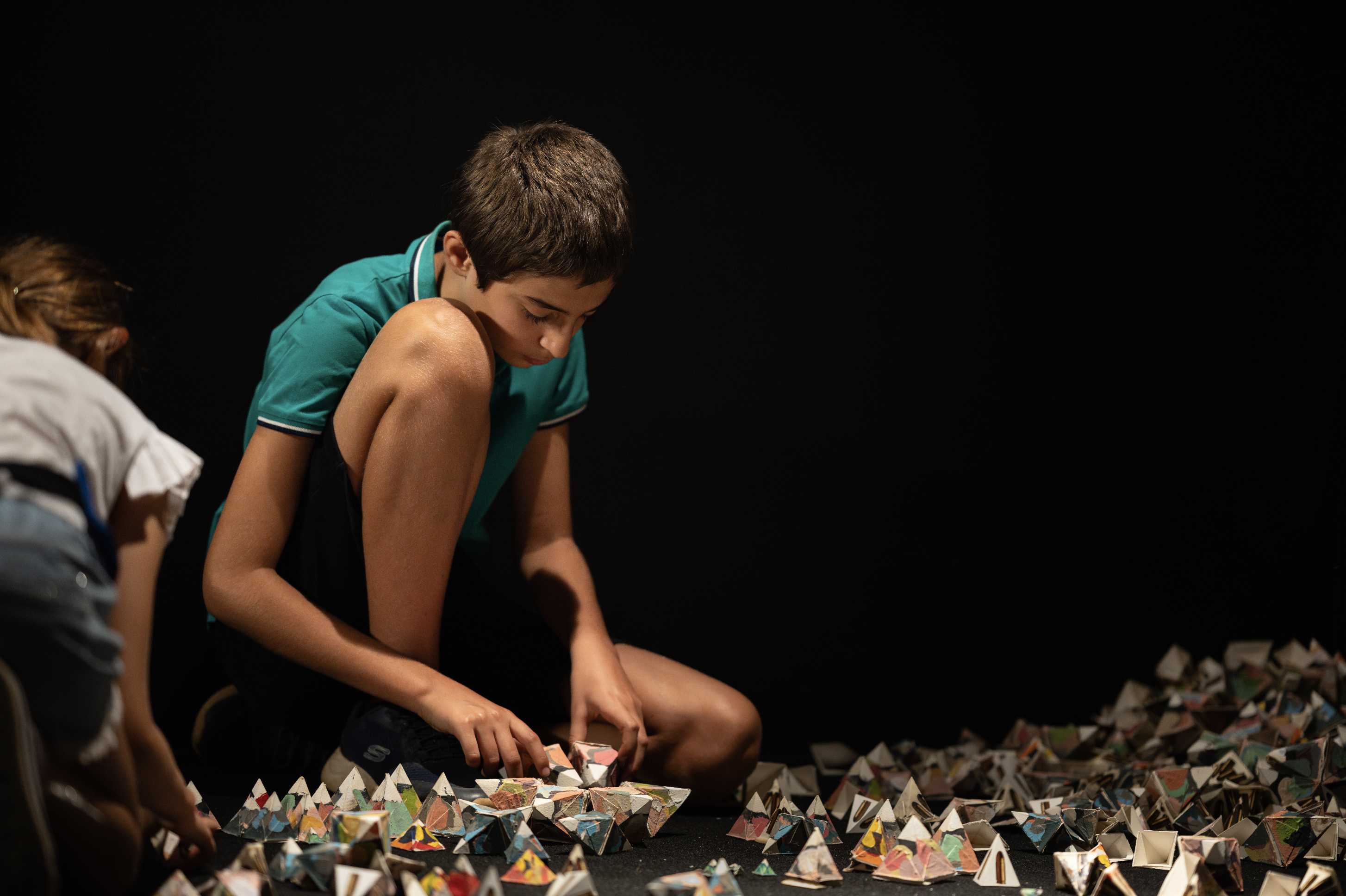
Paper Cones (2022)
(Edition commissioned for Serendipity Arts Festival 2023
Syed Ali Sarvat Jafri
Participatory Installation
Paper cones and Paint
‘Paper Cones’ features hundreds of handcrafted pyramid-like cones, distributed around the space inviting visitors to rearrange, shift, stack, and collaboratively re-build them to form a new landscape. Rooted in the historical and cultural milieu of Faizabad (now Ayodhya), a city with a rich Nawabi heritage and Muslim-influenced architectural contributions, Jafri’s artwork reflects the city’s complex history. In 1992, the violent demolition of the Babri Masjid caused considerable unrest and upheaval, particularly affecting Faizabad’s Muslim-majority neighbourhoods. Emerging out of his family’s own experience of this communal violence and subsequent instances over the years, Jafri began crafting and painting hundreds of paper cones like “tiny houses of worship” in an attempt to shift the definitions of the sacred, particularly in response to witnessing houses being painted saffron across the landscape. He wanted the cones to bleed not the colour red but different “colours of peace”.
By re-arranging the cones in a collective effort ‘Paper Cones’ invites participants into a dialogue with each other, to play a role in shaping cultural memory and preserving diverse heritages while striving to achieve peace and unity in a world marked by divisions.

Minaar (2020)
Syed Ali Sarvat Jafri
Sculpture
Terra Cota Pot, Iron Rod, Lakhori Brick, Metal Ring and Stand
Made up of a minaret-like terracotta pot that sits atop an iron rod resembling the lost 17th-century architecture of Faizabad, this sculpture melds the past with the present, representing a city’s cultural heritage in transition. Rooted in the turbulent history of Faizabad (now Ayodhya after its re-naming in 2014) ‘Minaar’ takes the form of a small monument aimed at re-consecrating the city’s Sufi and Shia heritage and its syncretic legacy amidst ongoing erasure. In a city torn between its past and present ‘Minaar’ serves as a call to preserve and revive Faizabad’s diverse cultural narratives, especially those histories marginalized in the nation’s evolving identity.
By constructing a small, make-shift, personal monument to an all but lost history, Jafri inquires how sacredness is inscribed and comes to become either integrated or erased from the broader narrative of national heritage.
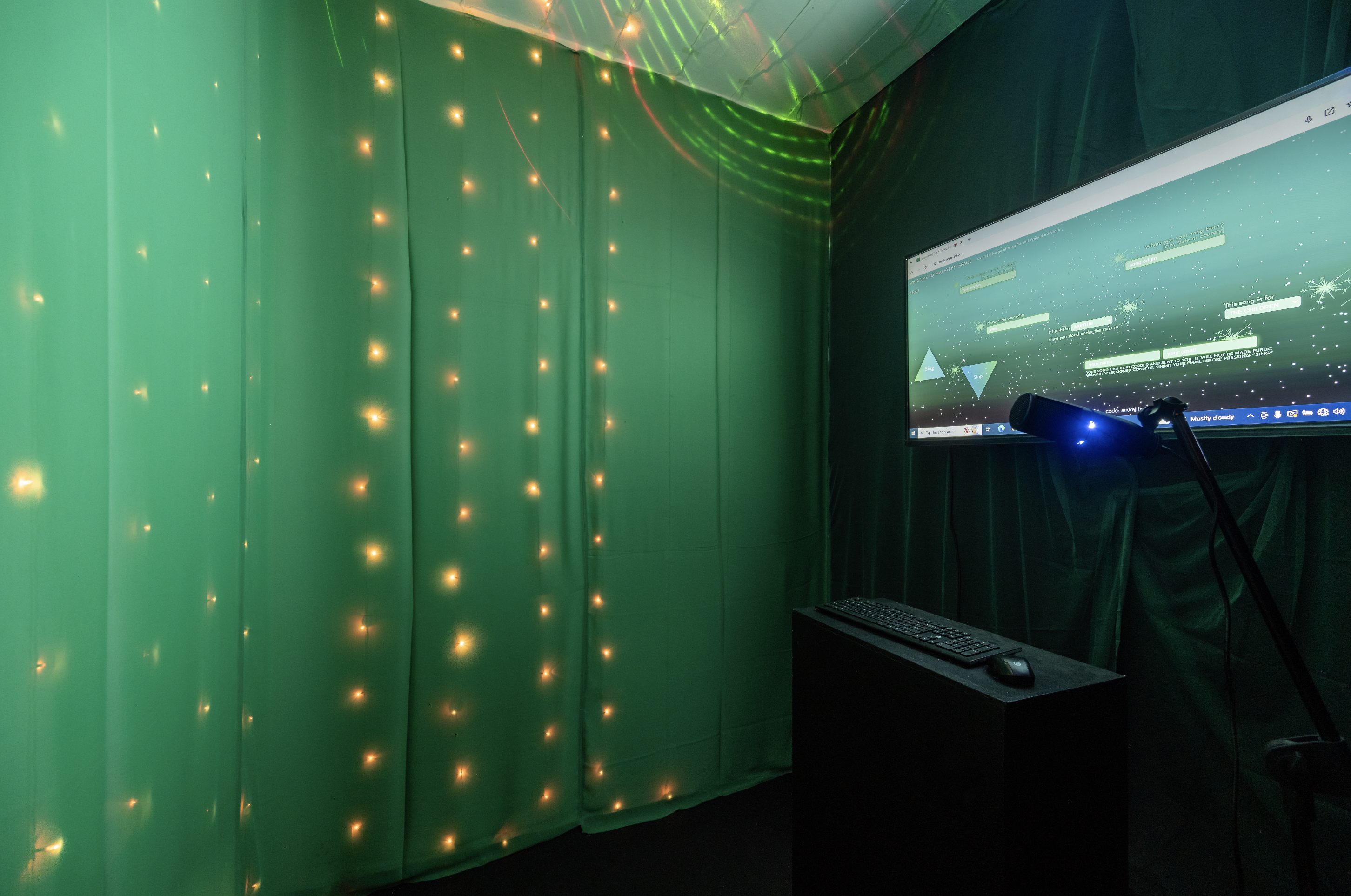

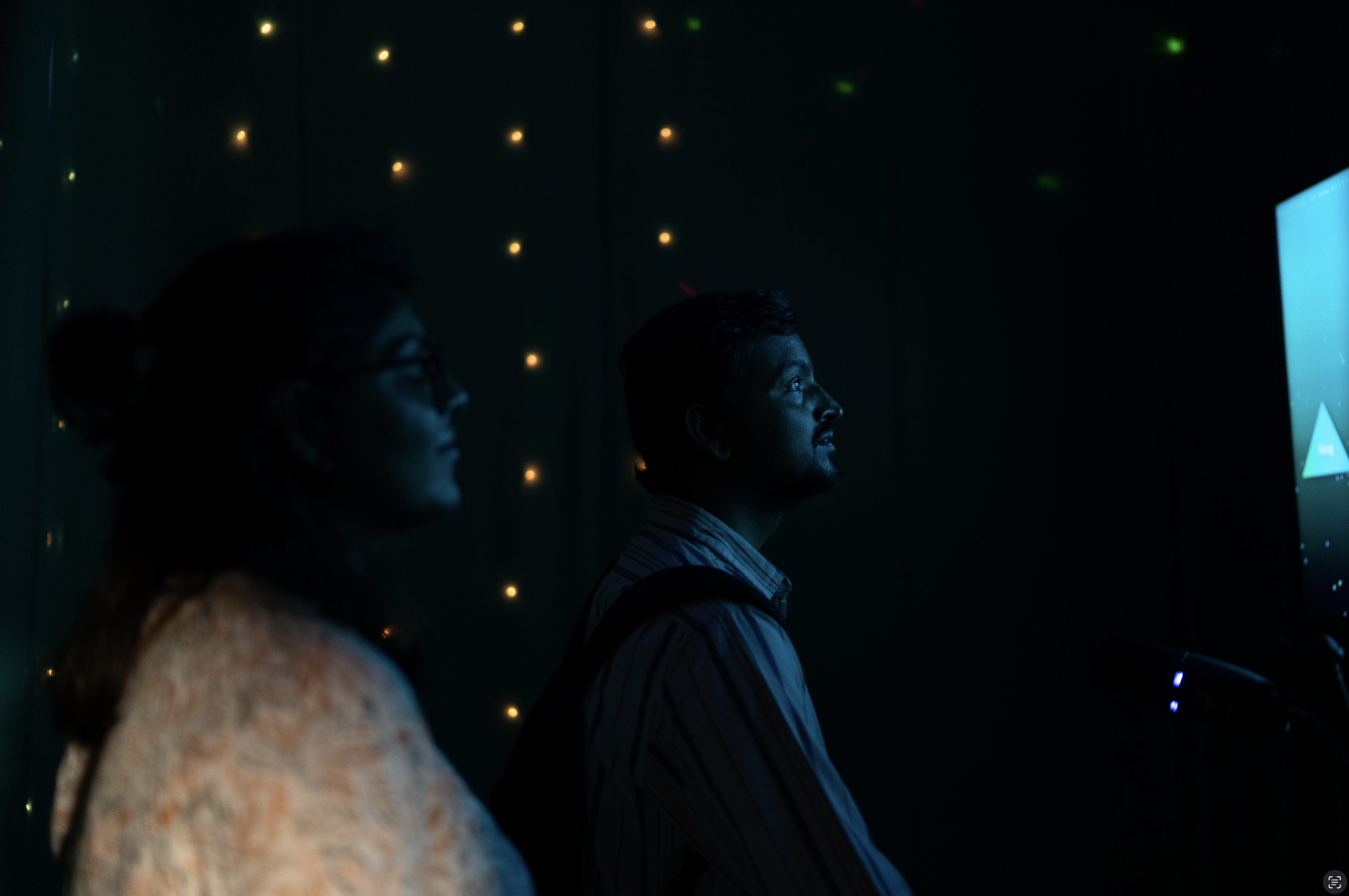
MALAYEEN.SPACE (2021)
(Edition commissioned for Serendipity Arts Festival 2023)
Leyya Mona Tawil
Participatory New Media Installation
Projection, Mic, Digital Interface, ‘On Air’ lightbox, Computer Console, Keyboard, Mouse, Standing Table, Fabric, LED lights and Mounted Speakers
MALAYEEN.SPACE aims to revive and preserve cultural narratives that are at risk of being forgotten by encouraging participants to “SING TO THE STARS!”. Simulating a recording studio, Leyya Mona Tawil’s installation invites participants to enter and contribute their own recordings. Once a recording is submitted, the song that plays back is modulated by the participant’s unique answers. The audio transformations are governed by the distance (in km) between the contributor and the location of their song’s origin, their distance in time to this place, and the song’s intent.
By involving visitors in the process of recording and sharing, the installation transforms into an evolving archive. By highlighting the importance of remembering and celebrating the stories and traditions of diasporic communities, MALAYEEN.SPACE addresses sacredness as something that is an ongoing, participatory narrative rather than a static collection.
MALAYEEN.SPACE was developed by Leyya Mona Tawil and code designer Andrej Hrončo, as part of the larger Noise & Nation project by Lime Rickey International. The project reflects Tawil’s diverse heritage, blending Syrian, Palestinian, and American influences. It features an interactive collection of songs and stories, influenced by their origins and the contributors’ backgrounds.
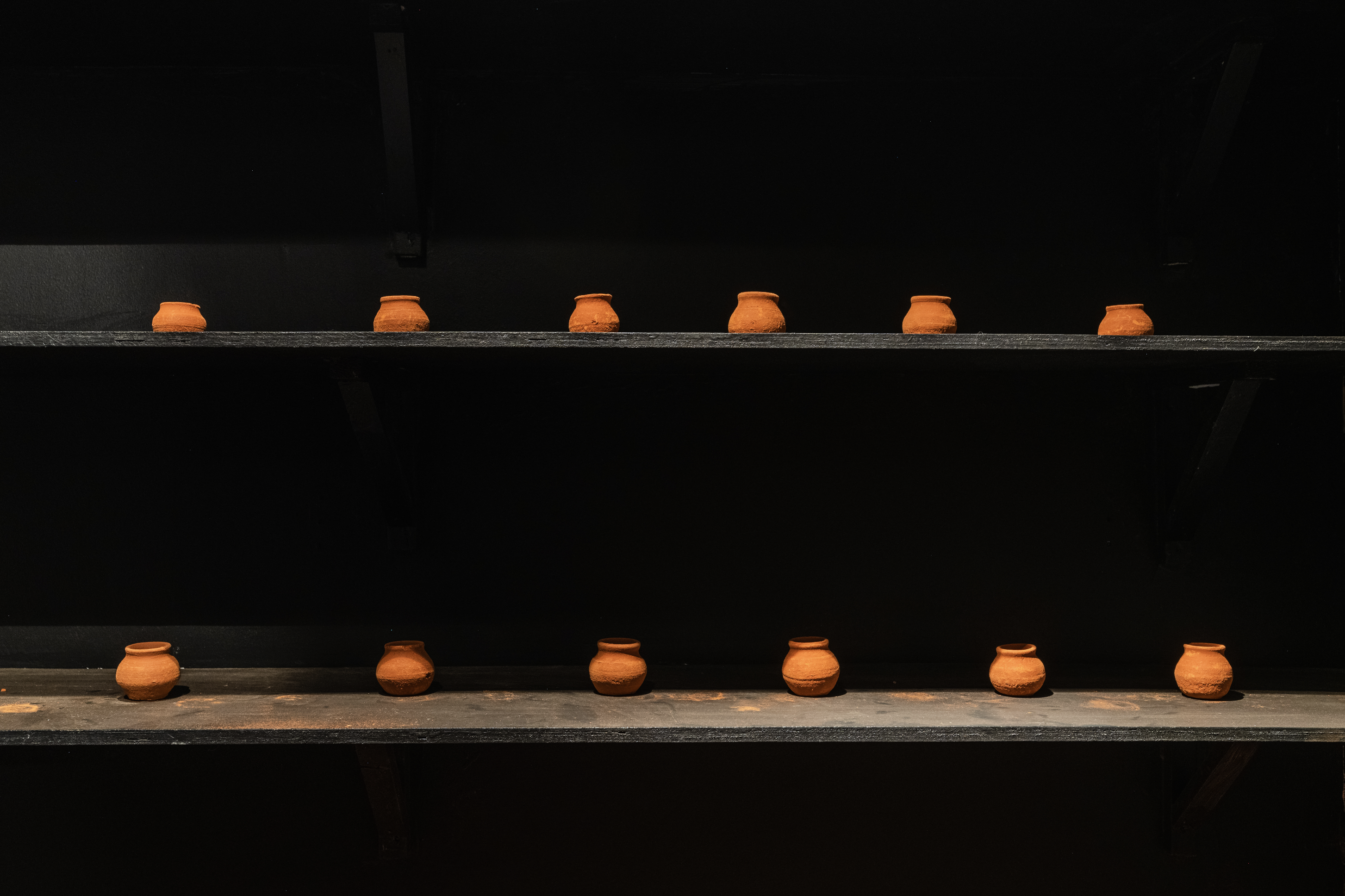
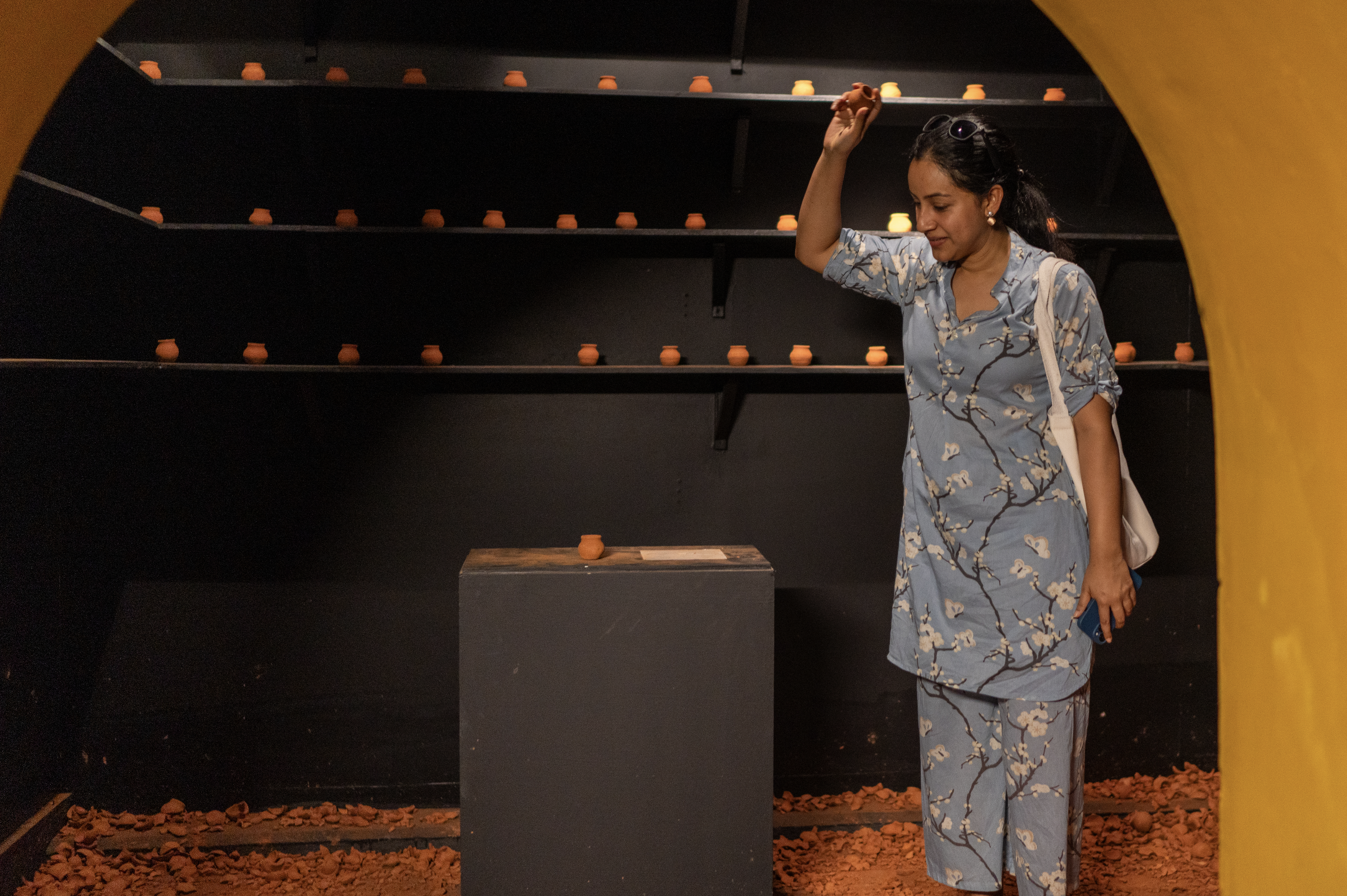
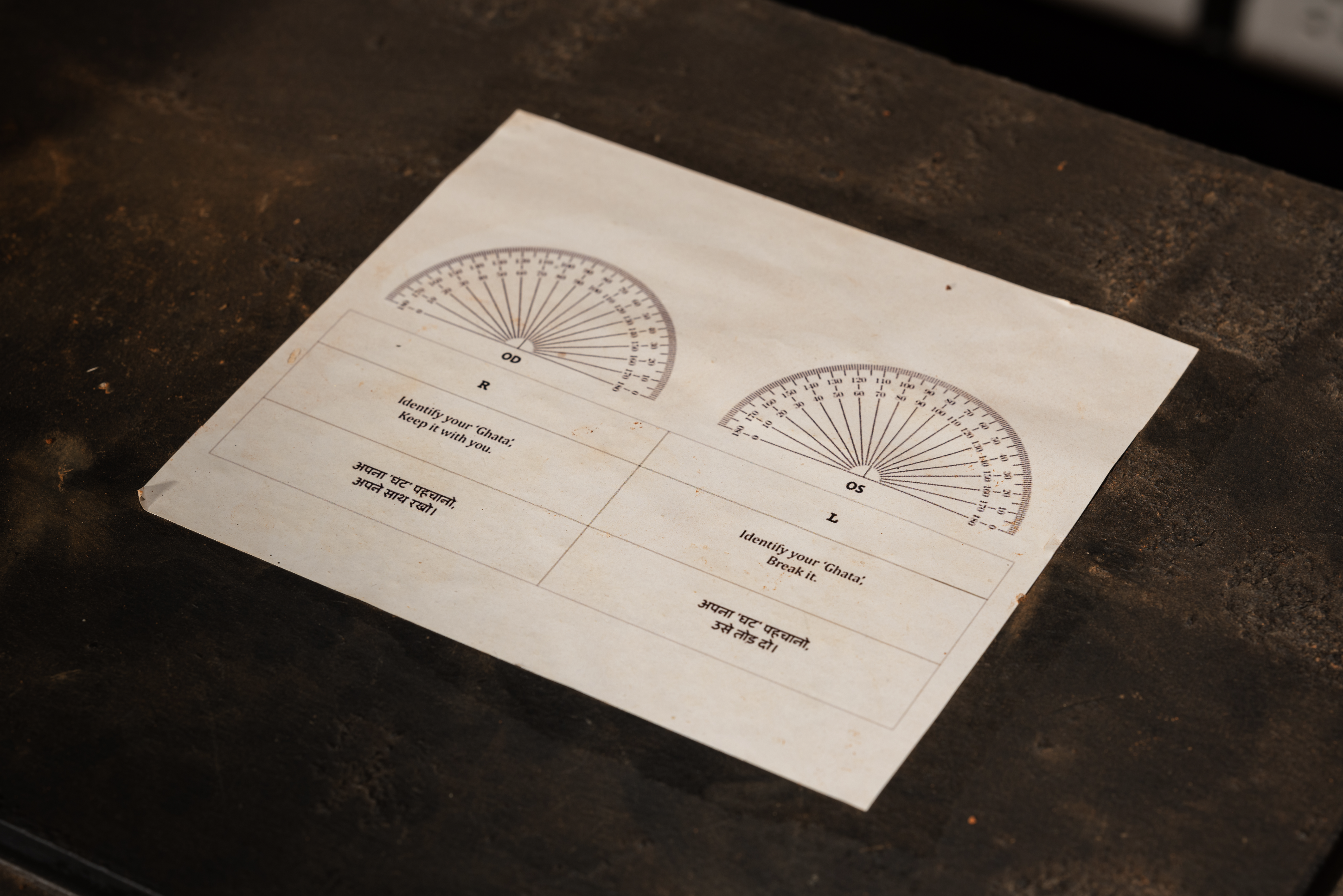
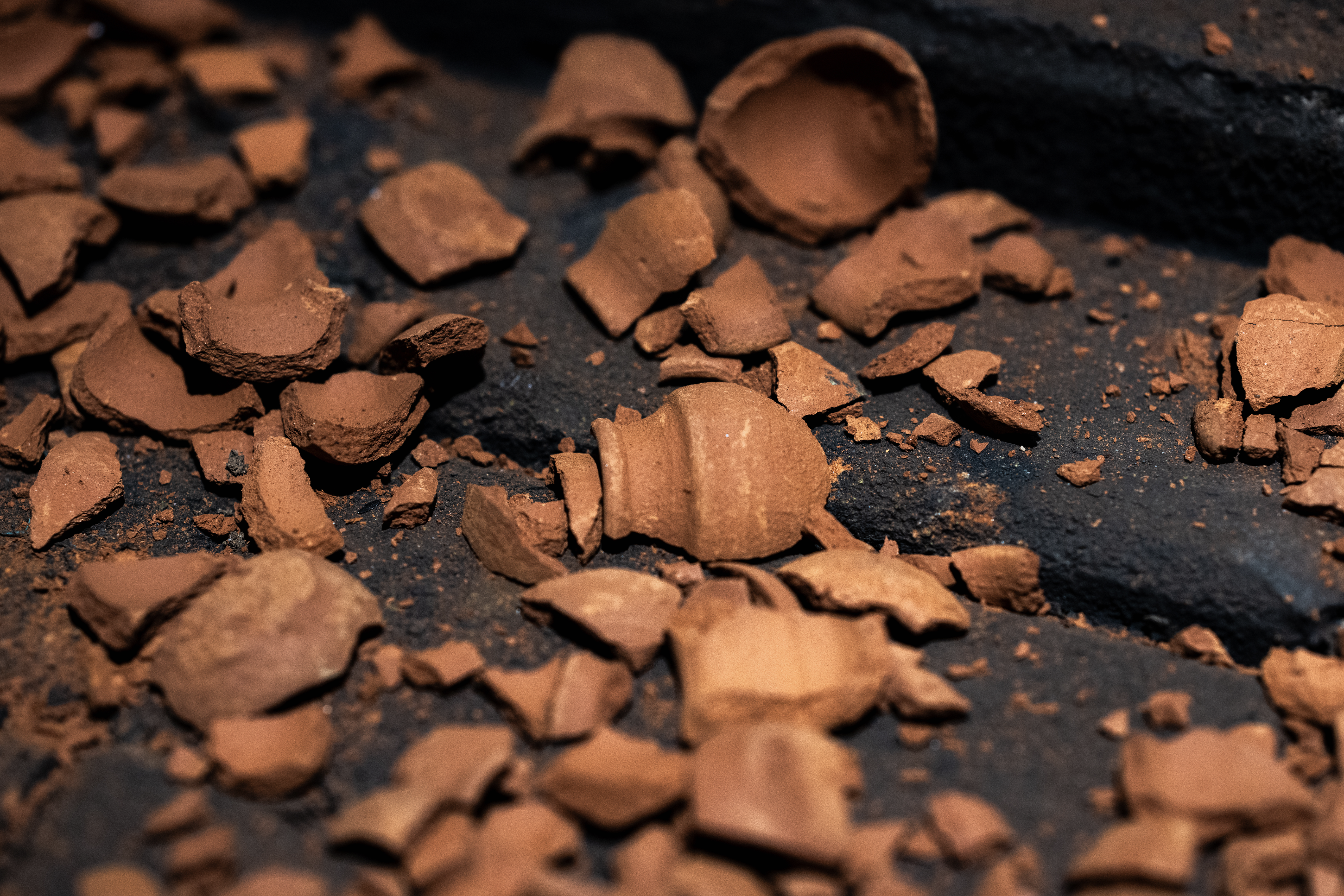
Smash the Brahmanical Patriarchy (2018)
Smita Urmila Rajmane
Edition commissioned for Serendipity Arts Festival 2023
Participatory Installation and Audio
Clay Pots, Shelves, Stand, Instruction Sheets, MP3 player and Headphones
Featuring a large number of stacked terracotta pots on four shelves, with each shelf representing a different tier of the caste hierarchy, Smita Urmila Rajmane invites participants to identify a pot correlating with their societal position. Titled ‘Smash the Brahmanical Patriarchy’, the installation, accompanied by a set of instructions, offers participants a choice: retain the pot for yourself or physically smash it.
To smash a pot on the floor would symbolise breaking the four-tiered caste system in India, and with that, the reverence a participant may have for their own place in the caste hierarchy. In this work, the artist draws inspiration from Radhika Vemula’s action in 2017 at Elgar Parishad in Bhima Koregaon at which Vemula inaugurated the celebration of the Battle of Bhima-Koregaon; a significant point of pride in Dalit history; by smashing pots signifying caste hierarchy.
By offering the choice to either preserve or destroy a symbol of the caste system, Rajmane aims to provoke reflection on personal and societal roles in maintaining or challenging revered hierarchies.
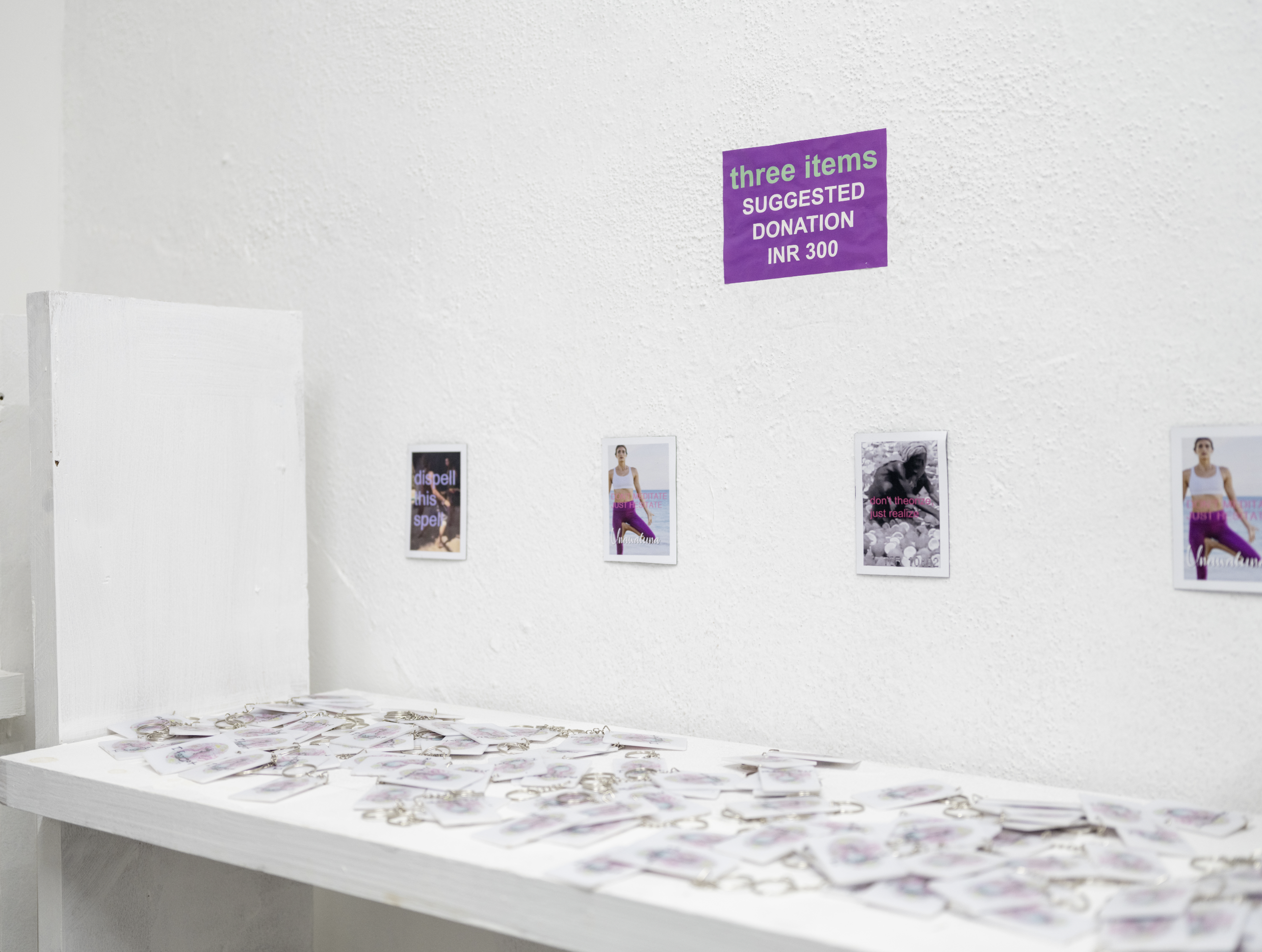

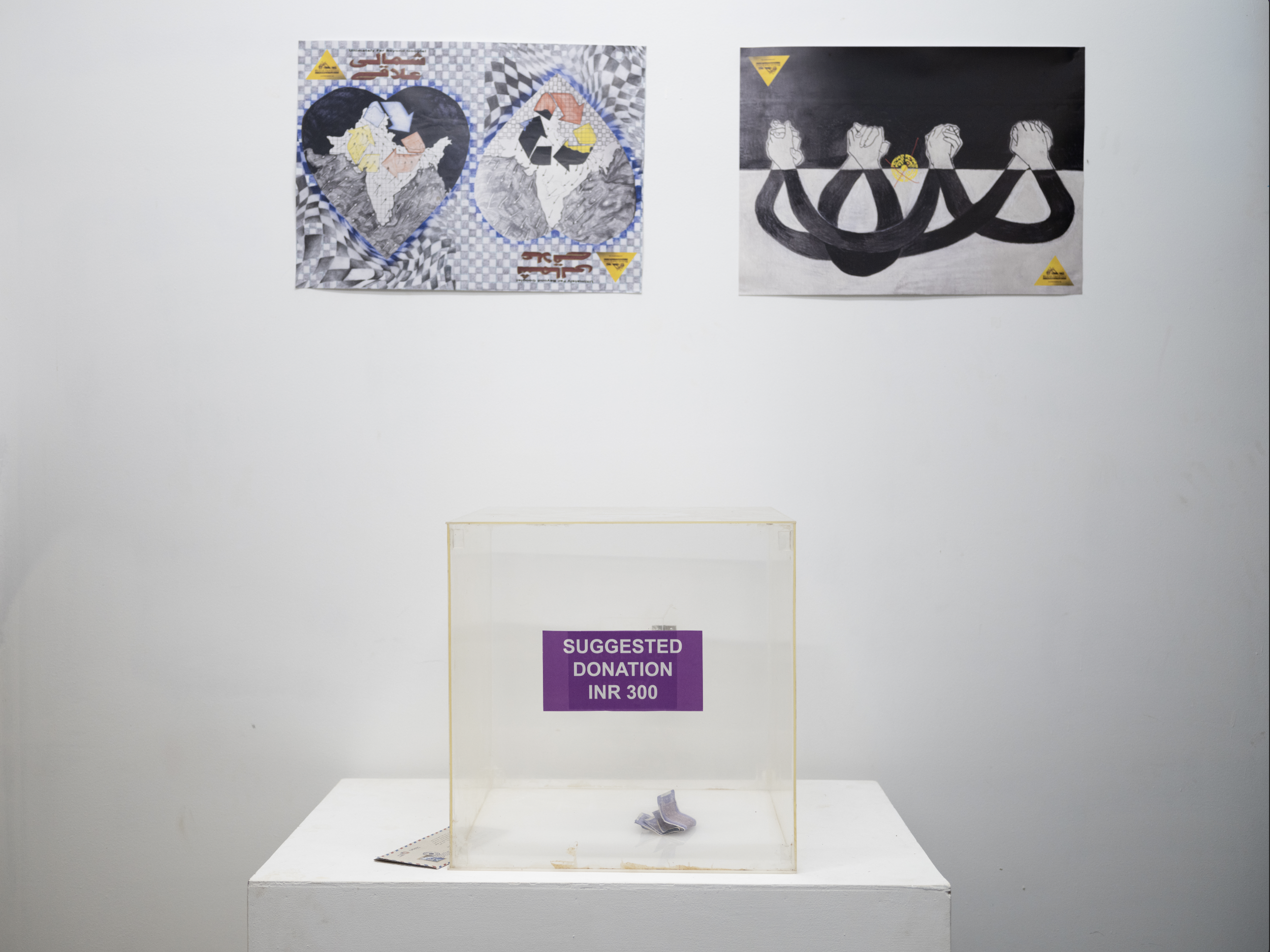


THE GIFT SHOP (2023)
Umber Majeed, Kitty Ritig, Bilaal Raji Saheed, The Packet
Commissioned for Serendipity Arts Festival 2023 Participatory Installation
Art Objects, Shelves, Fluorescent Tube Lights, Donation Box
THE GIFT SHOP presents objects to be claimed via donation as mementoes of remembrance. Featuring consumer products, souvenirs of diasporic memory, bootlegs and spiritual keepsakes, the artists invite devotees to consume.
Umber Majeed’s Trans Pakistan Adventure Services’, produces tourism-inspired souvenirs rooted in her own family archive, navigating the intersections of Pakistani polity, urbanity, and digitality through a feminist perspective. Kitty Ritig creates a series of hymnal-like praise books that weave themes of psychological comfort, home, and love. Bilaal Raji Saheed imagines a new pluralist ritual through a reimagined prayer flag for post-war Sri Lanka. The Packet’s interventions draw aphorisms from their live broadcasts, reproducing key texts and ideas in forms reminiscent of religious tracts and objects.
Mirroring an abandoned mall unit or an empty showroom, Gift Shop imagines the everyday consumer purchase as a ritual act, inviting customers to reconsider the role of the marketplace. In this work, a simulated environment defined by profit-driven strategies becomes a sanctuary for contemplation on surplus extraction, urban life, and the ever-evolving monetization of emotions. Reflecting on the haunting power of the capitalist hand, the artists and artworks in the gift shop ask “When does a marketplace cease to be a shrine?”
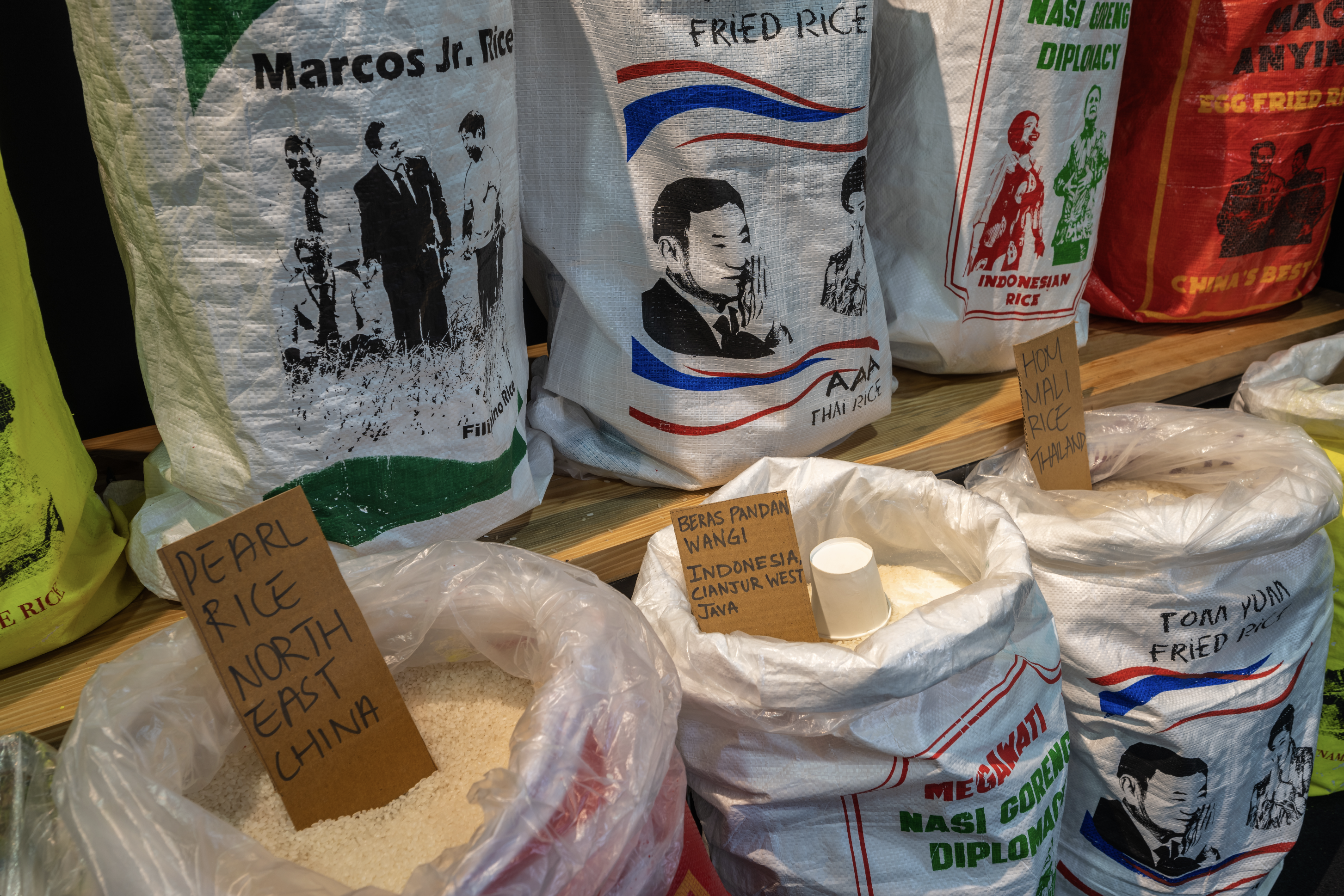

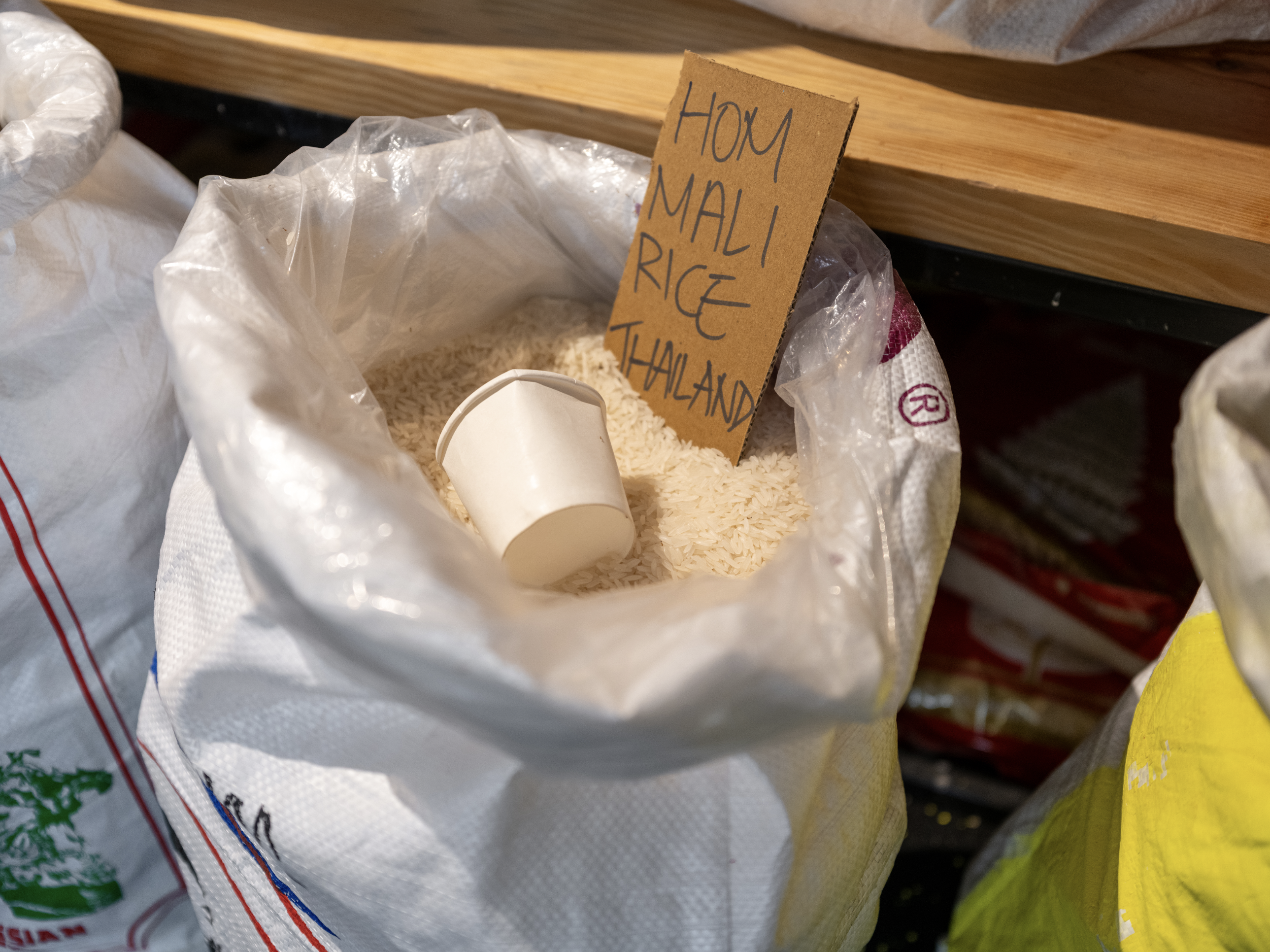

Nasi Goreng Diplomacy (commissioned for Serendipity Arts Festival 2023)
Chu Hao Pei
Participatory Installation
Rice Bags, International Rice Varieties, Silkscreen Packaging, Labels and Cashbox
Nasi Goreng Diplomacy features a ubiquitous shop front selling various rice varieties from Thailand, Indonesia, Vietnam, Philippines and China. To purchase these rice varieties however a visitor is required to purchase Indian-grown non-basmati rice first, which can then be exchanged for the other rice varieties. Each packet of rice exchanged is accompanied by stories, recipes or anecdotes highlighting the surprisingly significant role that rice has played in global politics.
“Nasi Goreng Diplomacy” draws inspiration from a political event in 2019 when former Indonesian President Megawati symbolically reconciled with her political rival, Prabowo, over a dish of home-cooked nasi goreng (Malay/Indonesian for fried rice). This culinary diplomacy underscores the power of a common dish in shaping political shifts.
Chu Hao Pei reflects on this event, contextualized against the backdrop of India’s non-basmati white rice export ban from July 2023, thereby underscoring the interplay of international trade and of culinary traditions in shaping diplomatic discourse. Through this participatory work, the artist invites participants to reflect on how food politics across national and global boundaries impact everyday life.

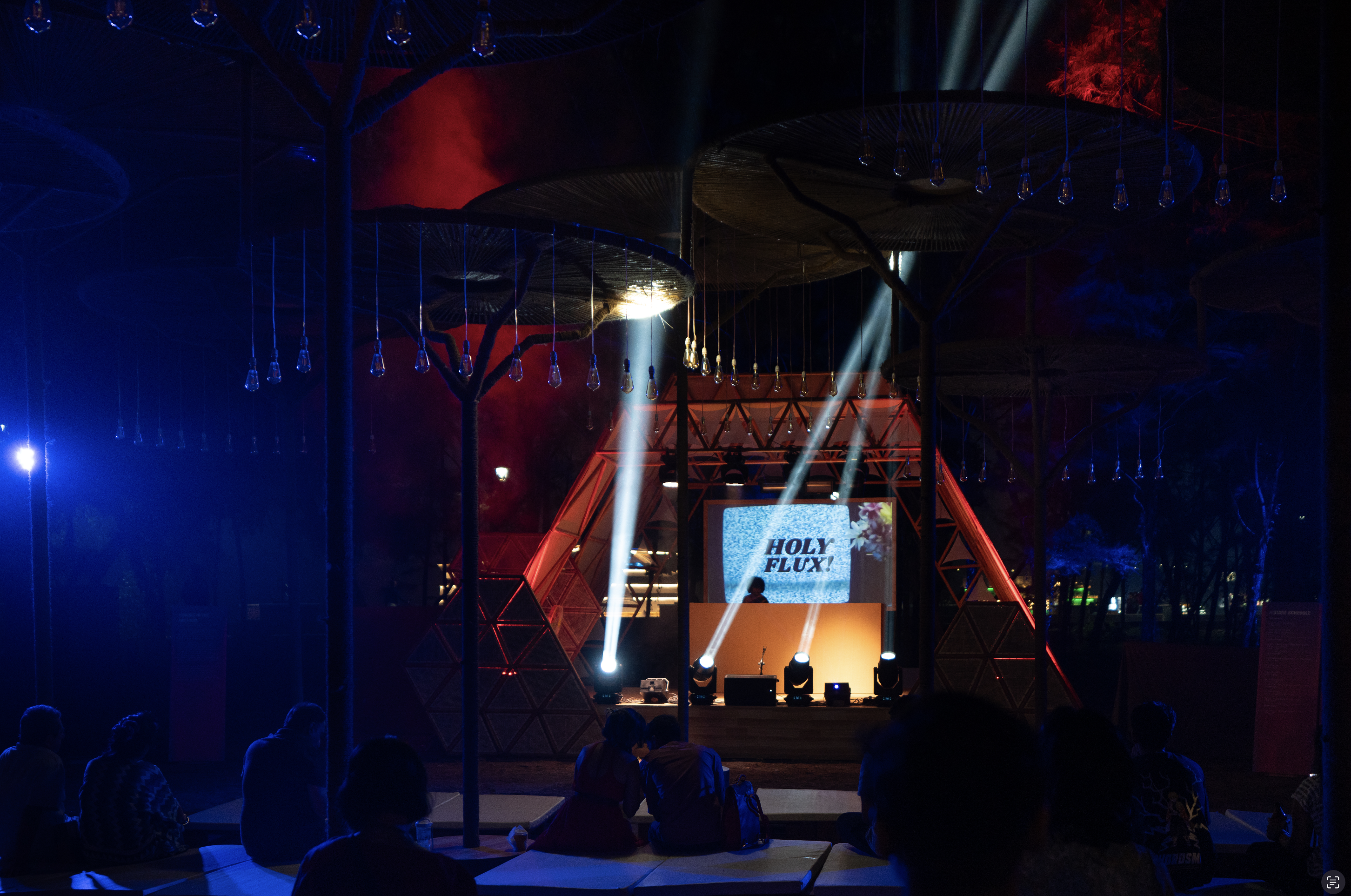
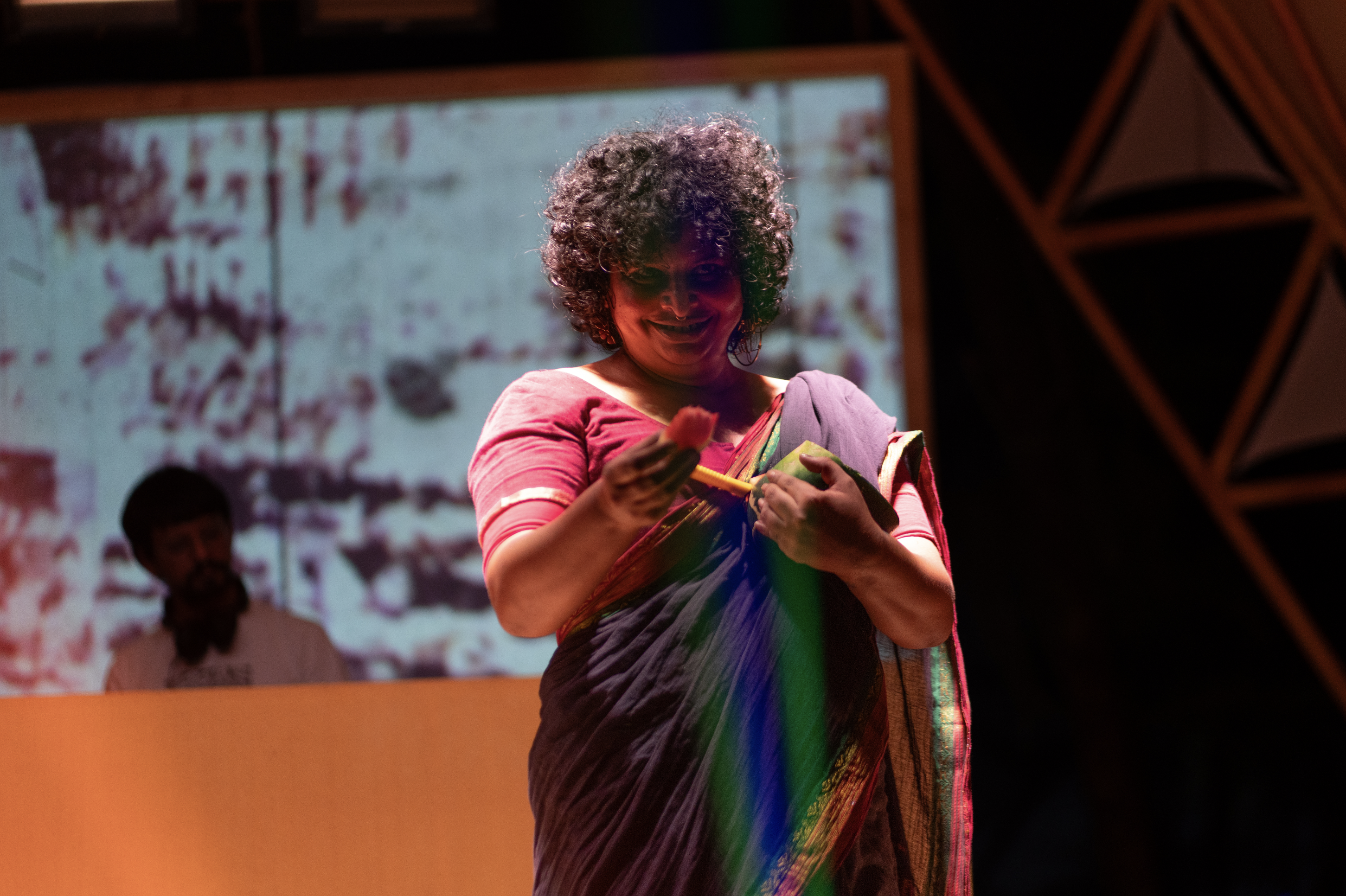
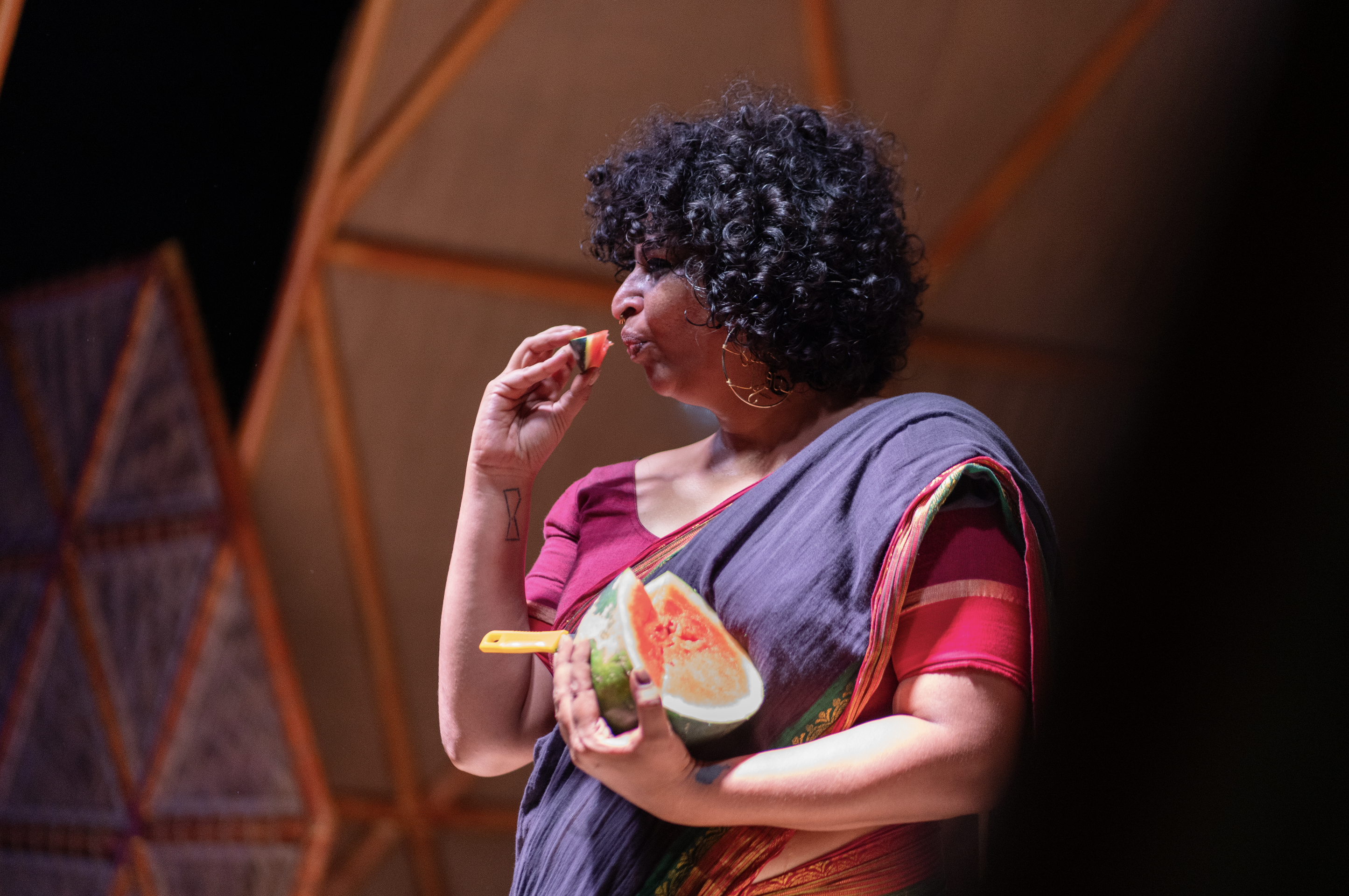

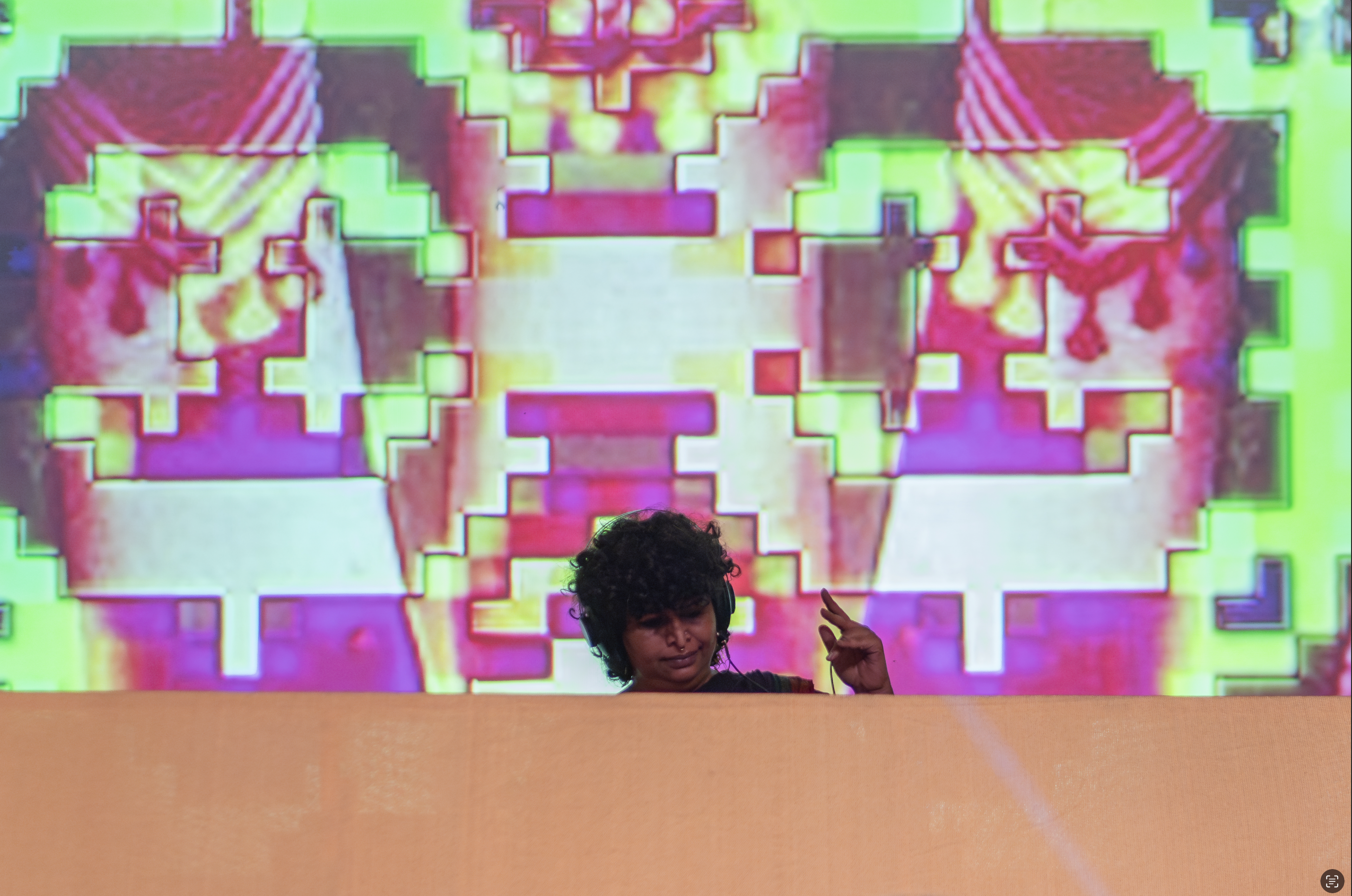
Ghost Party (2023 commissioned for Serendipity Arts Festival)
publicganja and Chutney Mary
(2023 commissioned for Serendipity Arts Festival)
Performance and Installation
Laser Lights, Projection, Audio and Mixed-media
Laser lighting, projections and traces of audio from a previous live performance fill the room like spectres. Centred yet invisible in the space is the sound of the artist Chutney Mary’s provocations on a mic coupled with projected visuals by publicganja.
By extracting frames from archival footage, including old wedding videos, and popular cinematic scenes from South Asia, publicganja ‘re-mixes’ them; injecting them with new life. Separating them from their original ideological contexts, the visuals break away from how they might have been originally seen. Intertwined with these visuals, artist Chutney Mary’s selection of music draws from a repertoire of queer ballroom anthems, mixed with sounds from the region, to form new sounds that are affirmative and liberatory. Featuring both the good and the bad of our shared visual and audio histories, publicganja’s visuals and Chutney Mary’s music and voice invite a review of how our stories of belonging; to a place, culture, or communal spirit; are told through how we navigate our relationship to space, sound, image, and our own bodies.
In a post-pandemic world, where the memory of parties temporarily relegated to swipeable online spaces were a ritual necessity, this ghost-party asks what it means to re-stage a party as a shrine-like space. By attempting to capture and loop the transient nature of a live experience, this work asks for a different kind of immersion: can a party also be a sacred space?